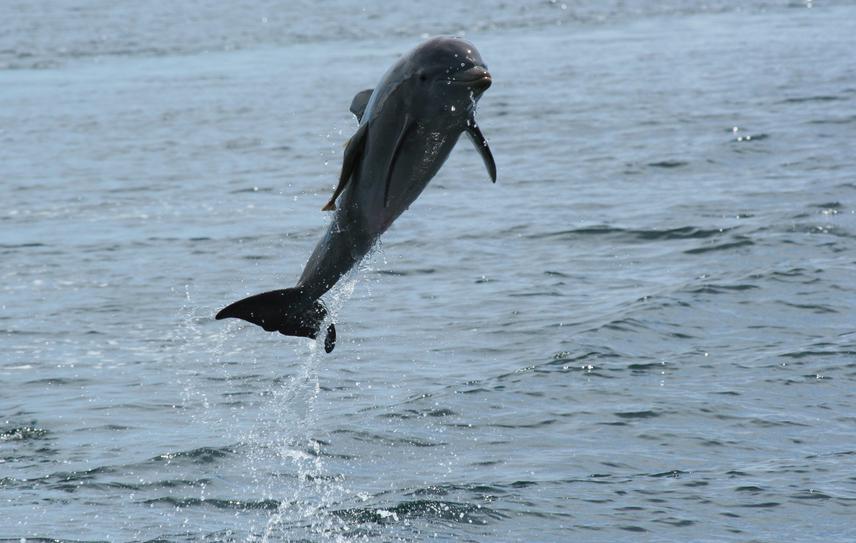Dalia Carolina Barragán Barrera
Other projects
11 Oct 2012
The Effect of Dolphin-Watching on Different Bottlenose Dolphin Ecotypes in Bocas del Toro (Panama): Studying Behaviour Responses Combined with Genetic Structure
8 Dec 2015
Studying the Foraging Ecology, Heavy Metals Bioaccumulation and the Health Status of the Bottlenose Dolphins of Bocas Del Toro, Panama
20 Nov 2017
Studying the Ecological Isolation and Physiological Response to Anthropogenic Stressors of a Vulnerable Bottlenose Dolphin Population in Bocas Del Toro, Panama
30 Oct 2019
Studying the Physiological Response of Bottlenose Dolphins to Anthropogenic Stressors Related to Boat Traffic in the Archipelago of Bocas Del Toro, Panama
The aim of this project is to construct a baseline for conservation and management of the bottlenose dolphin population in Bocas del Toro.

© David Palacios.
The gap of genetic information in Panama is maybe the principal cause to have prevented propose an appropriate management unit. It is necessary to define what management unit (“inshore ecotype” or “worldwide distribution form”) are found in Panama to work together with government and local communities to conserve these dolphins.
The coastal bottlenose dolphin population (Tursiops truncatus) of Bocas del Toro, Panama is the target of unsustainable boat-based dolphin tourism which has resulted in dolphin-boat collisions, changes in short-term dolphin behavior and shifts in distribution patterns. Concerns about the conservation of this bottlenose dolphin community have emerged due to its small size, low genetic diversity and high vulnerability to tour boat interactions in Dolphin Bay, a preferred habitat for dolphins and possible mother-calf nursery. As a result, the Panamanian government identified this population as a high conservation priority, highlighting the urgent need for better conservation management. However, in order to achieve long-term conservation goals, more genetic data is needed to identify adequate conservation management units based on level of exposure to tour boats.
Using systematic photo-identification surveys, we will collect biopsy tissue samples from individual dolphins to determine the genetic stock of this bottlenose dolphin population and adjacent areas like Laguna de Chiriqui, Portobelo and Colon. Using participatory field surveys, we will also collect behavioral data to determine if individual dolphin activity budgets differ in control and impact scenarios in order to quantify the bioenergetic costs of tourism to dolphins to inform tourism management. Project results will help define which bottlenose dolphin ecotype is found in Panama so an effective management plan can be developed for dolphin conservation in Bocas del Toro and adjacent areas.
The project will bridge the gap between the scientific and local communities by including key community members in data collection activities and conservation decision-making. Ultimately, project results will contribute to development of a community-based protocol to reduce negative impacts of current tourism practices and inform sustainable tourism and conservation initiatives in Bocas del Toro in collaboration with local stakeholders.